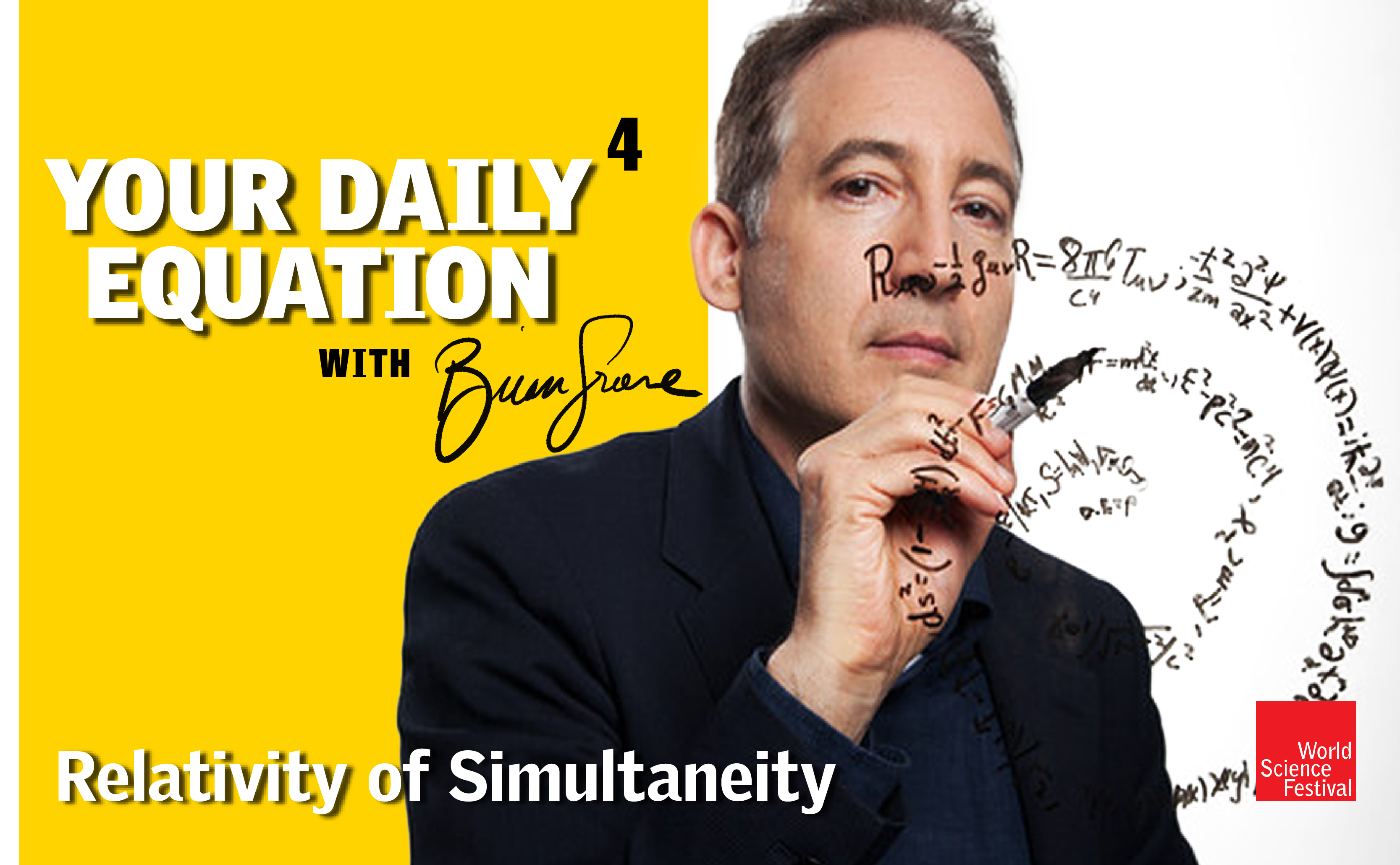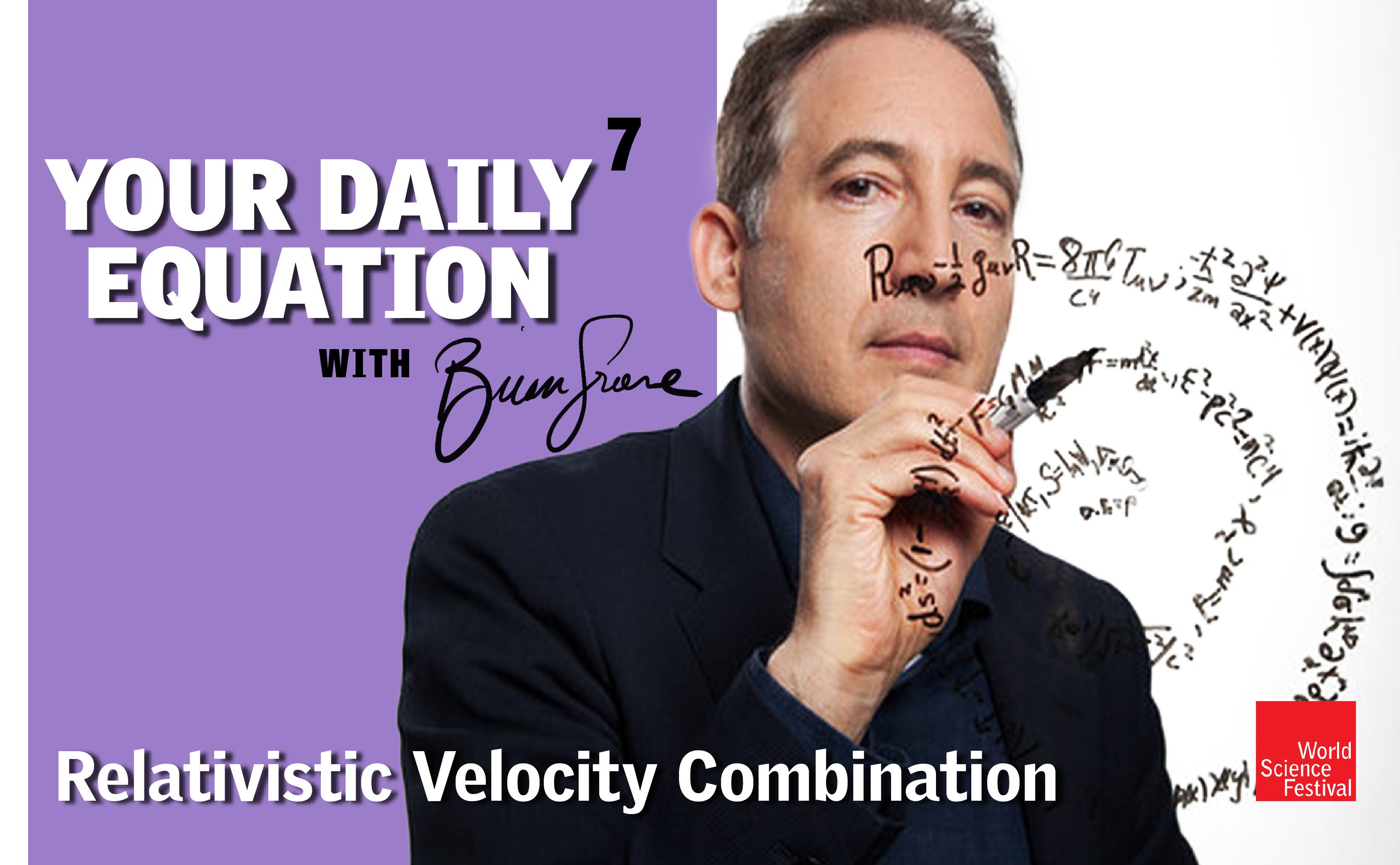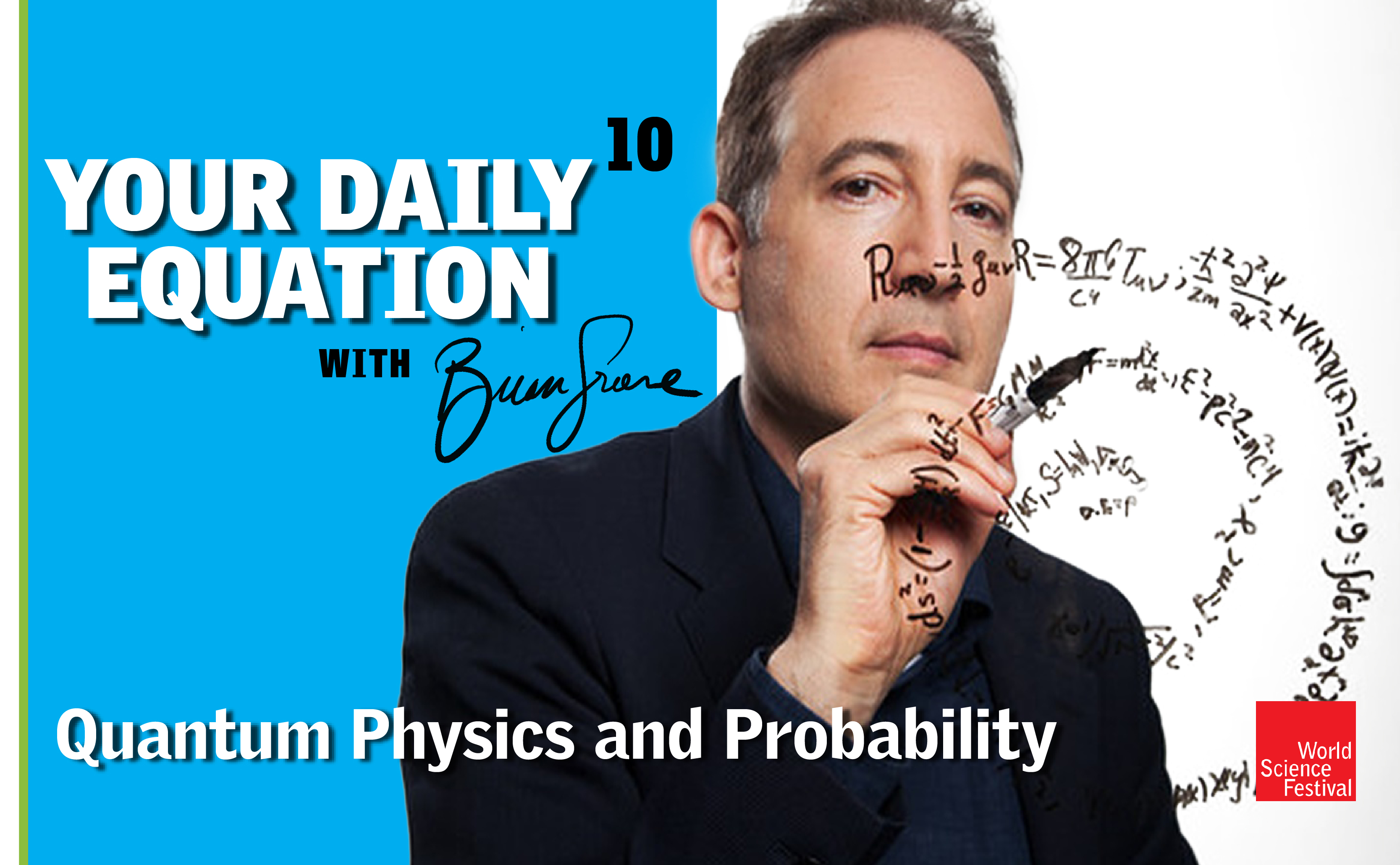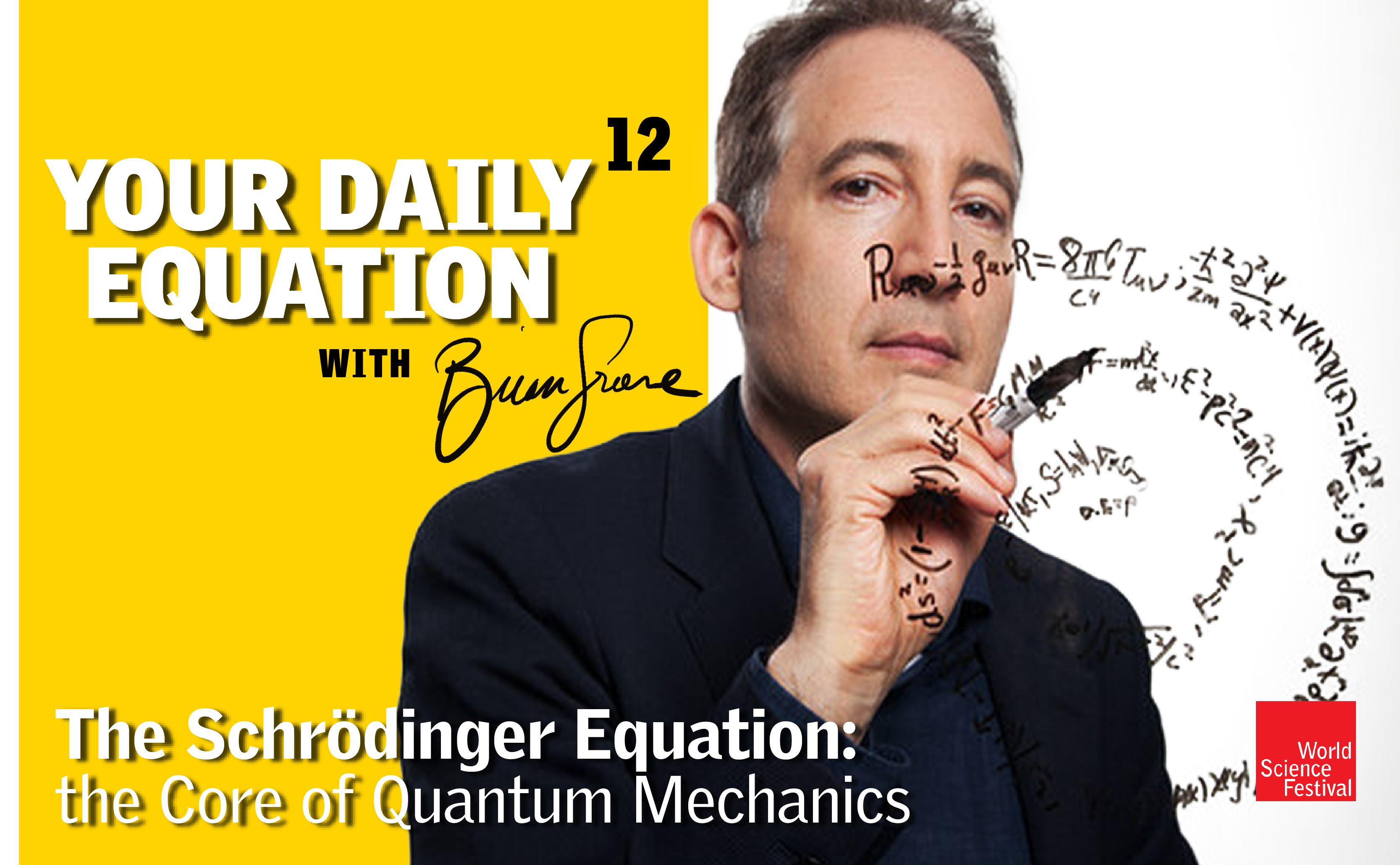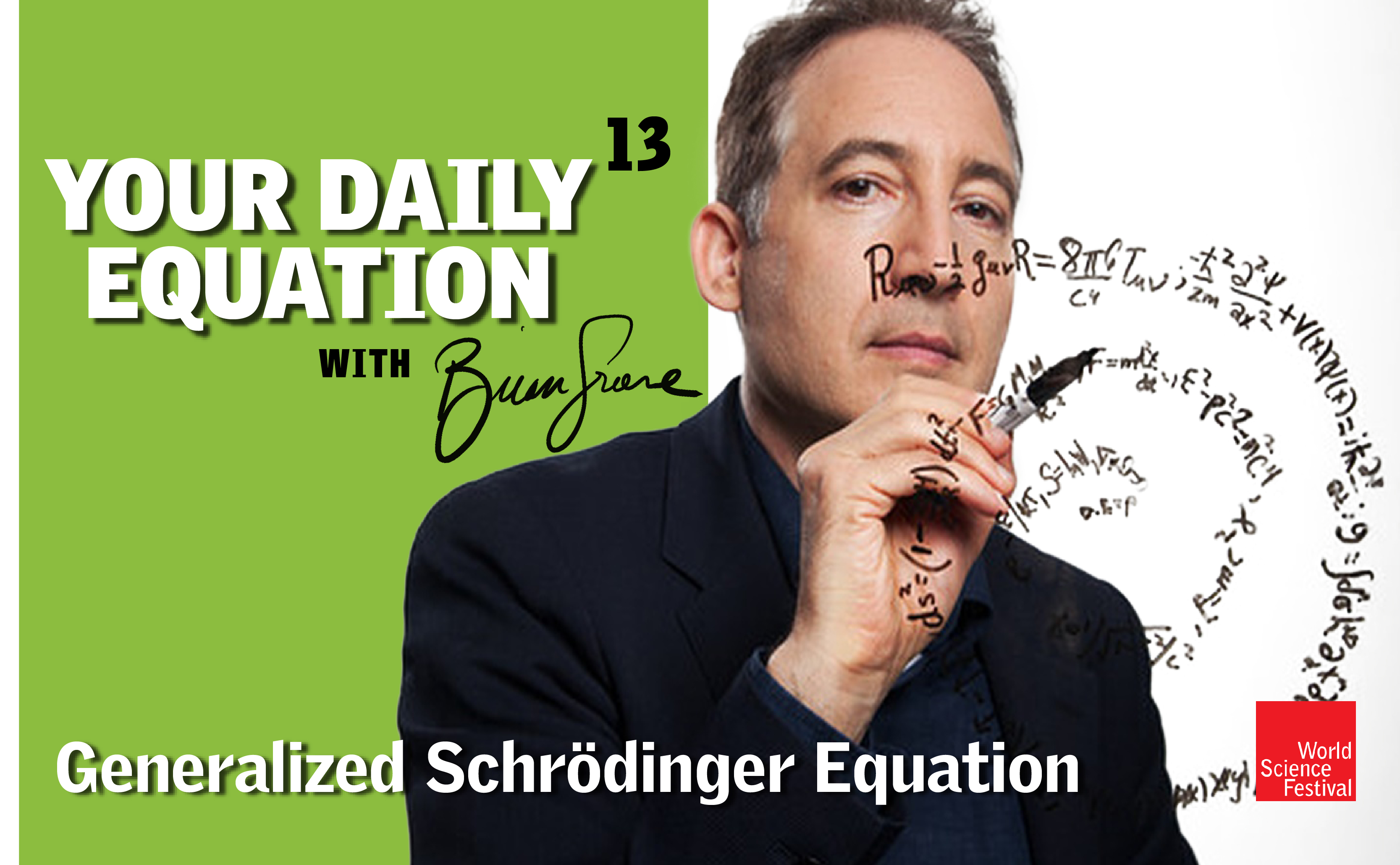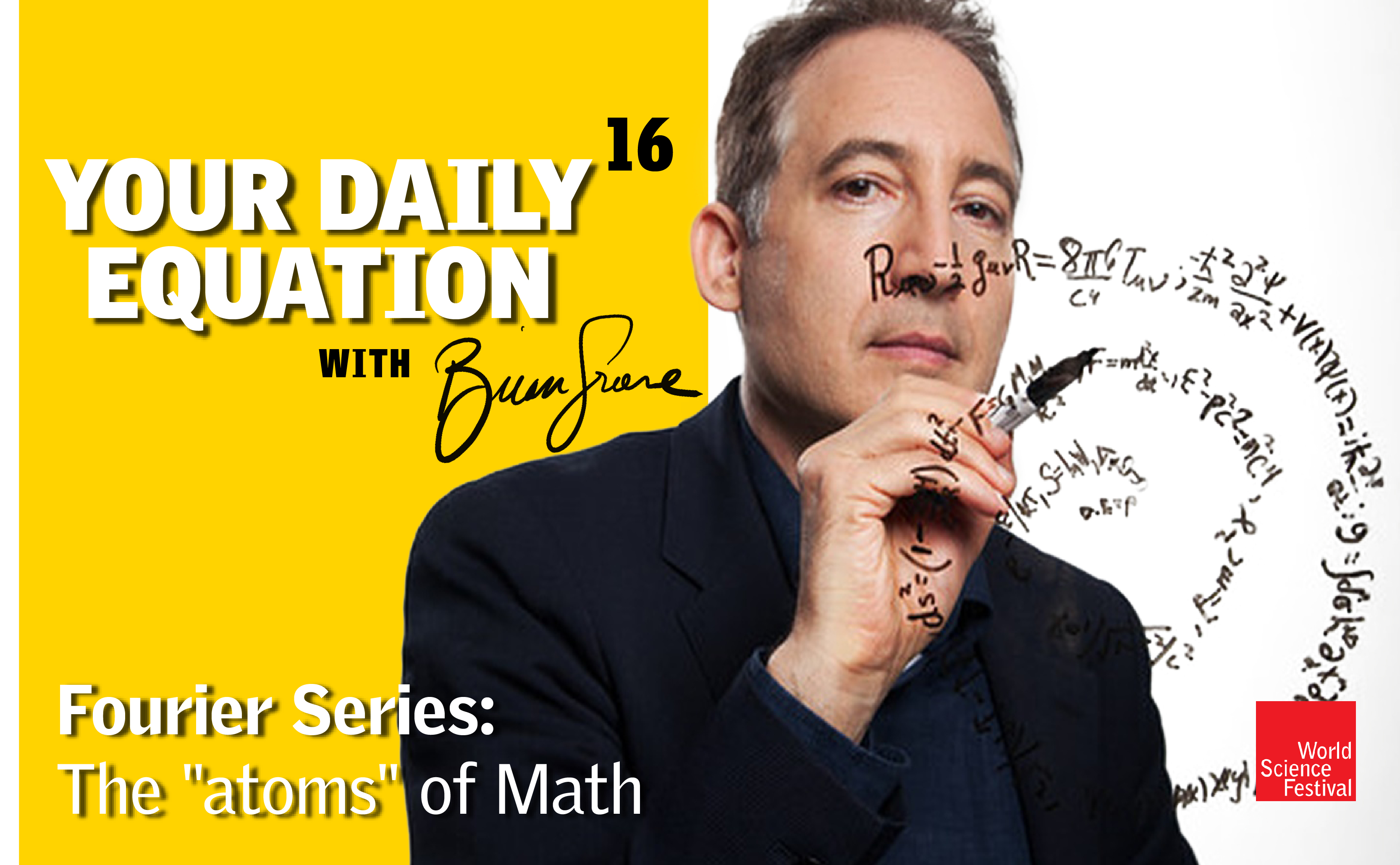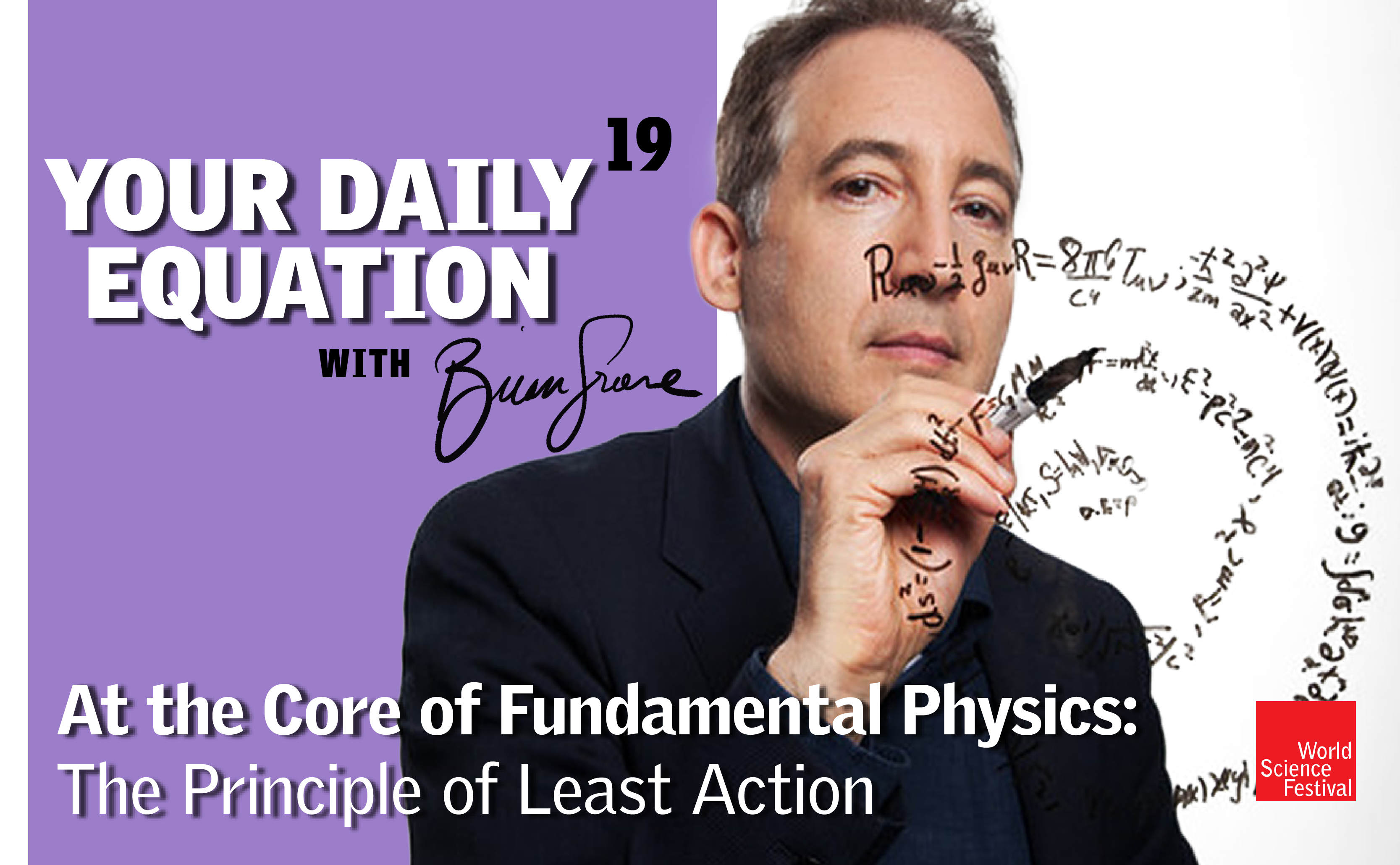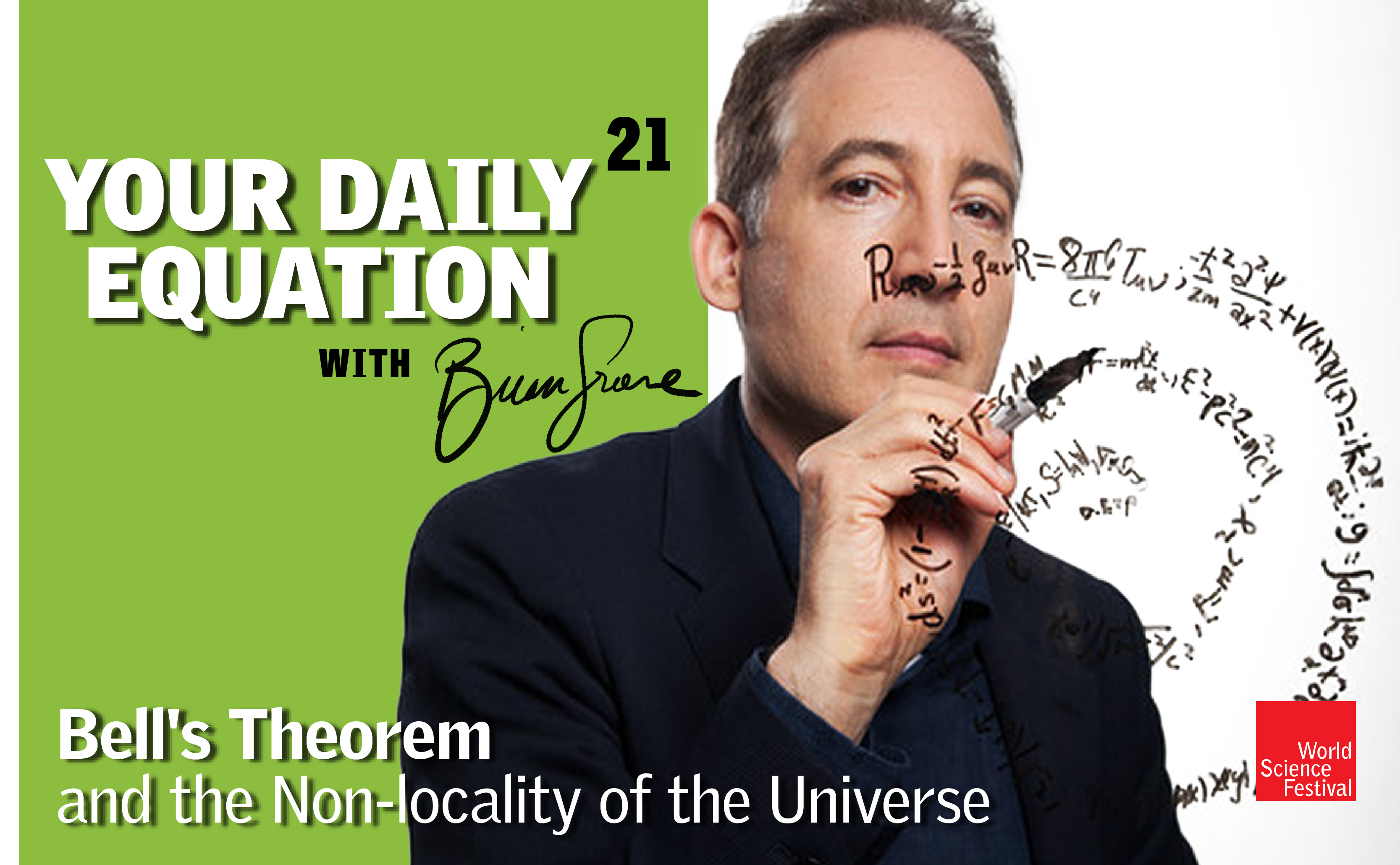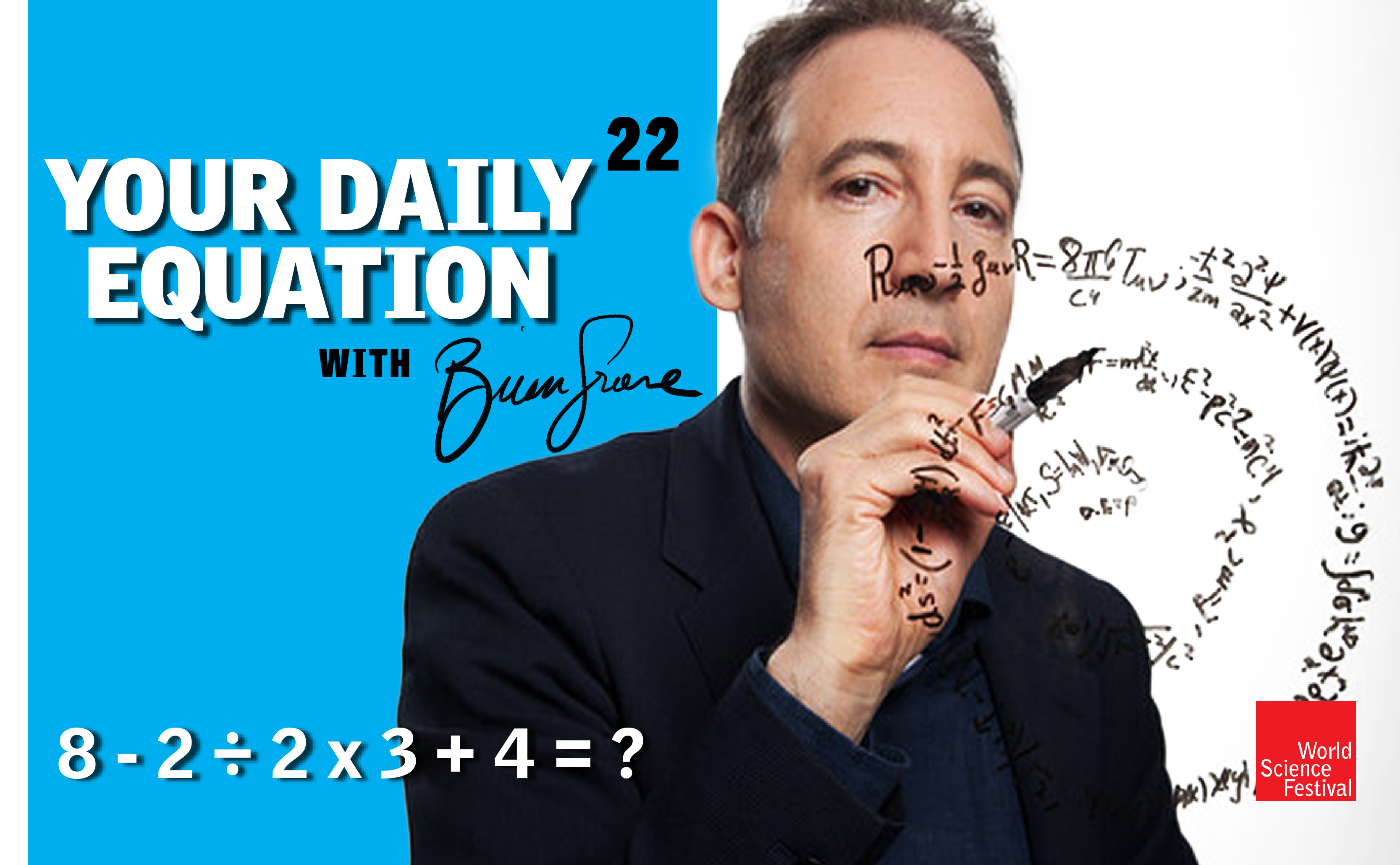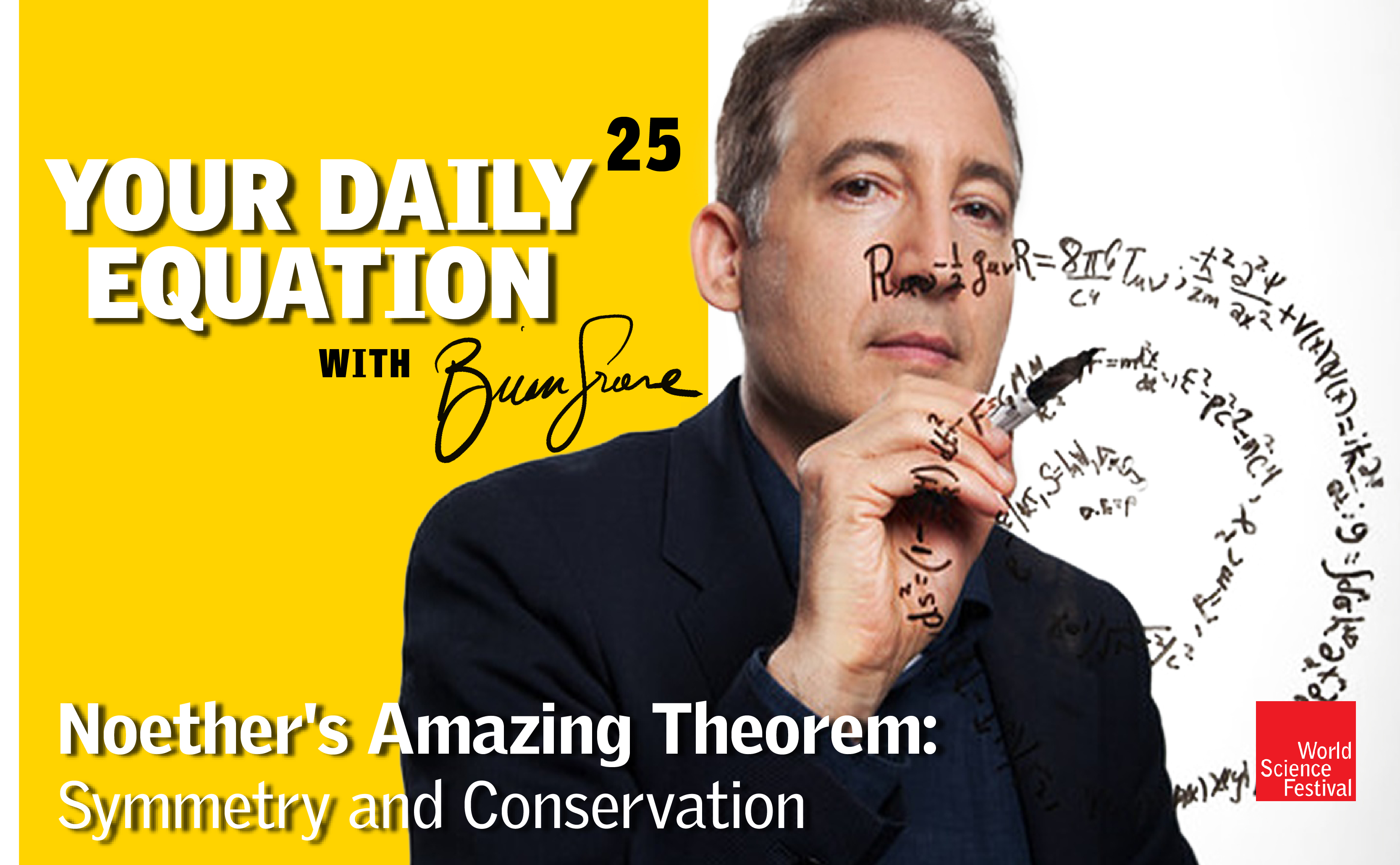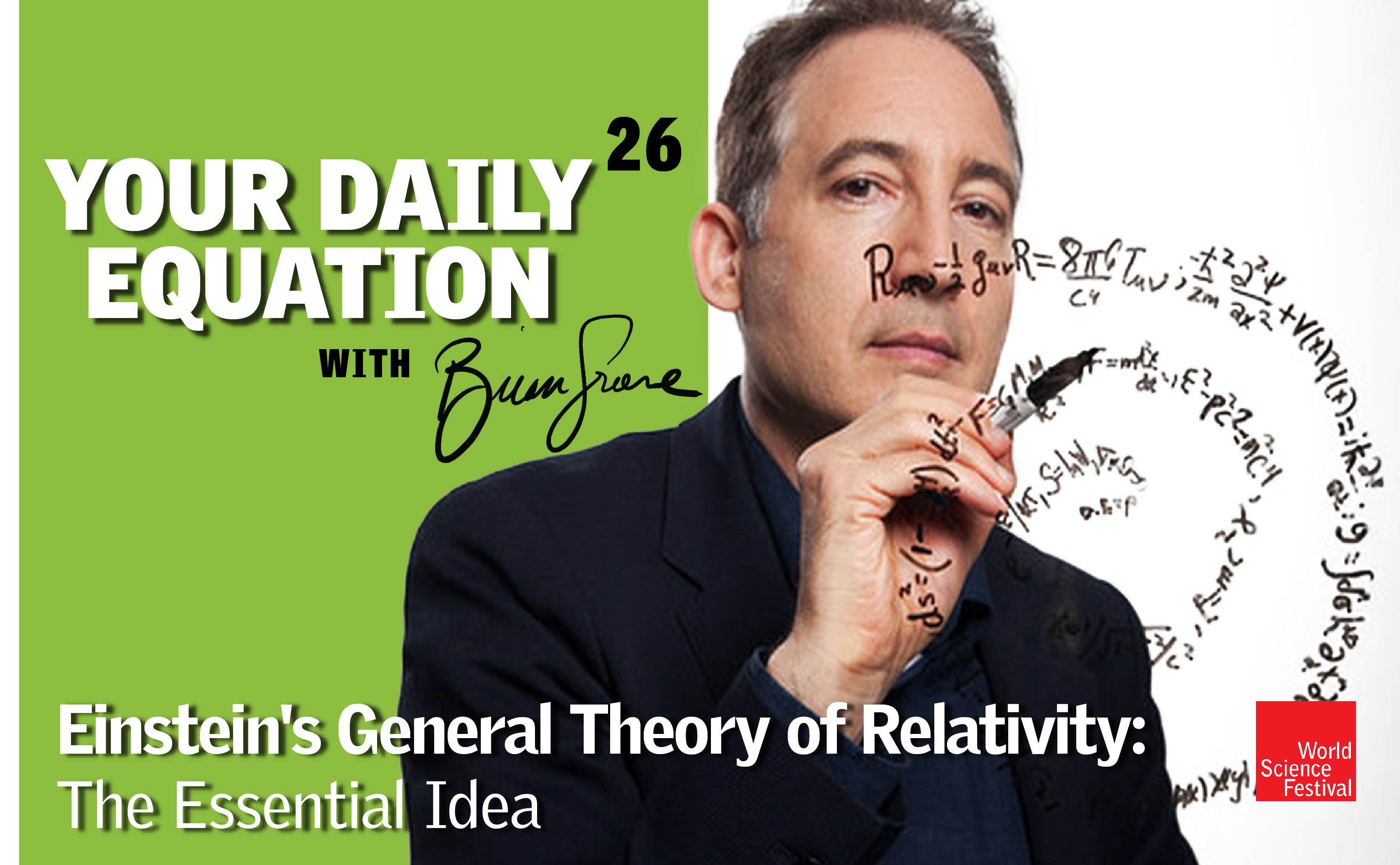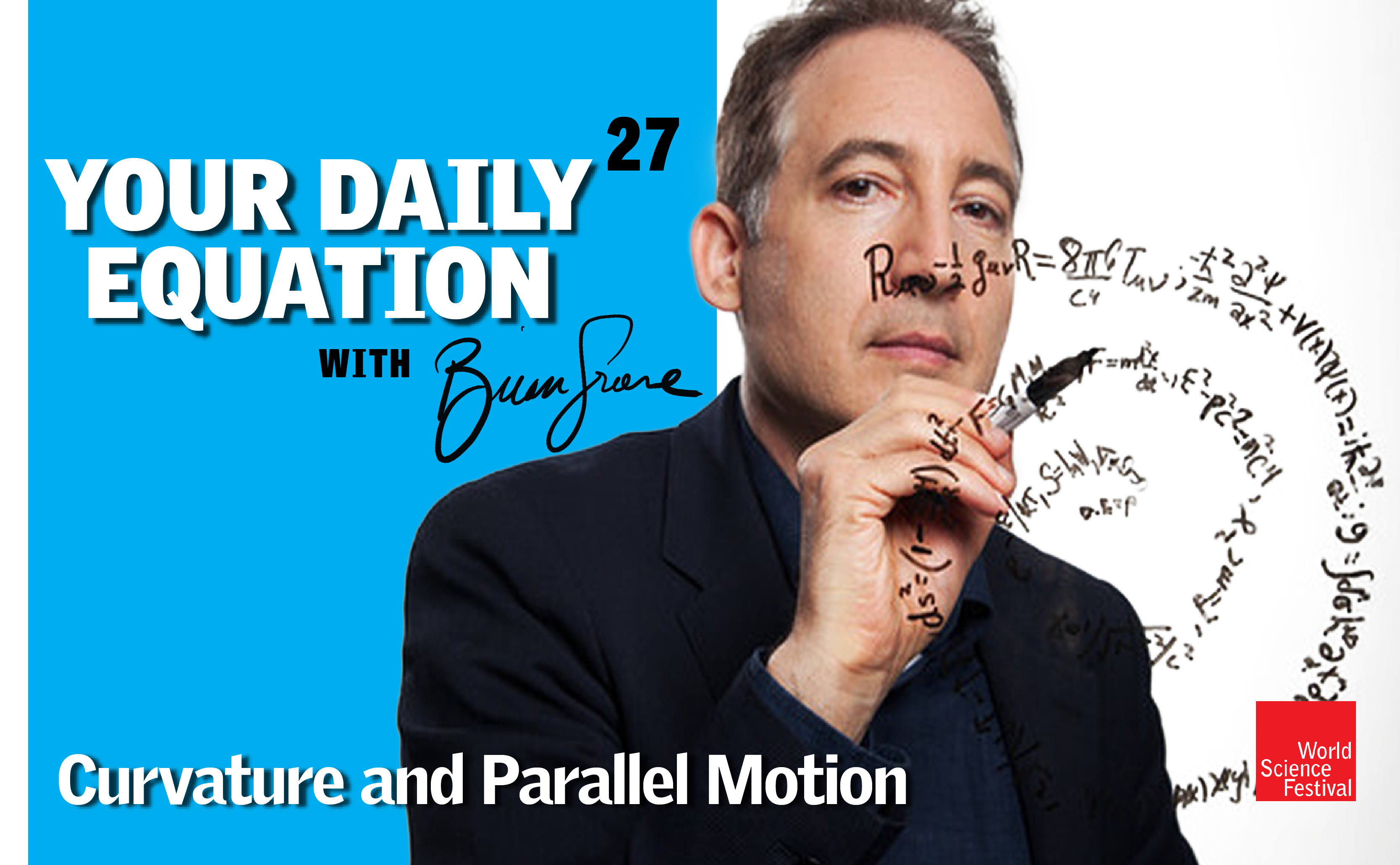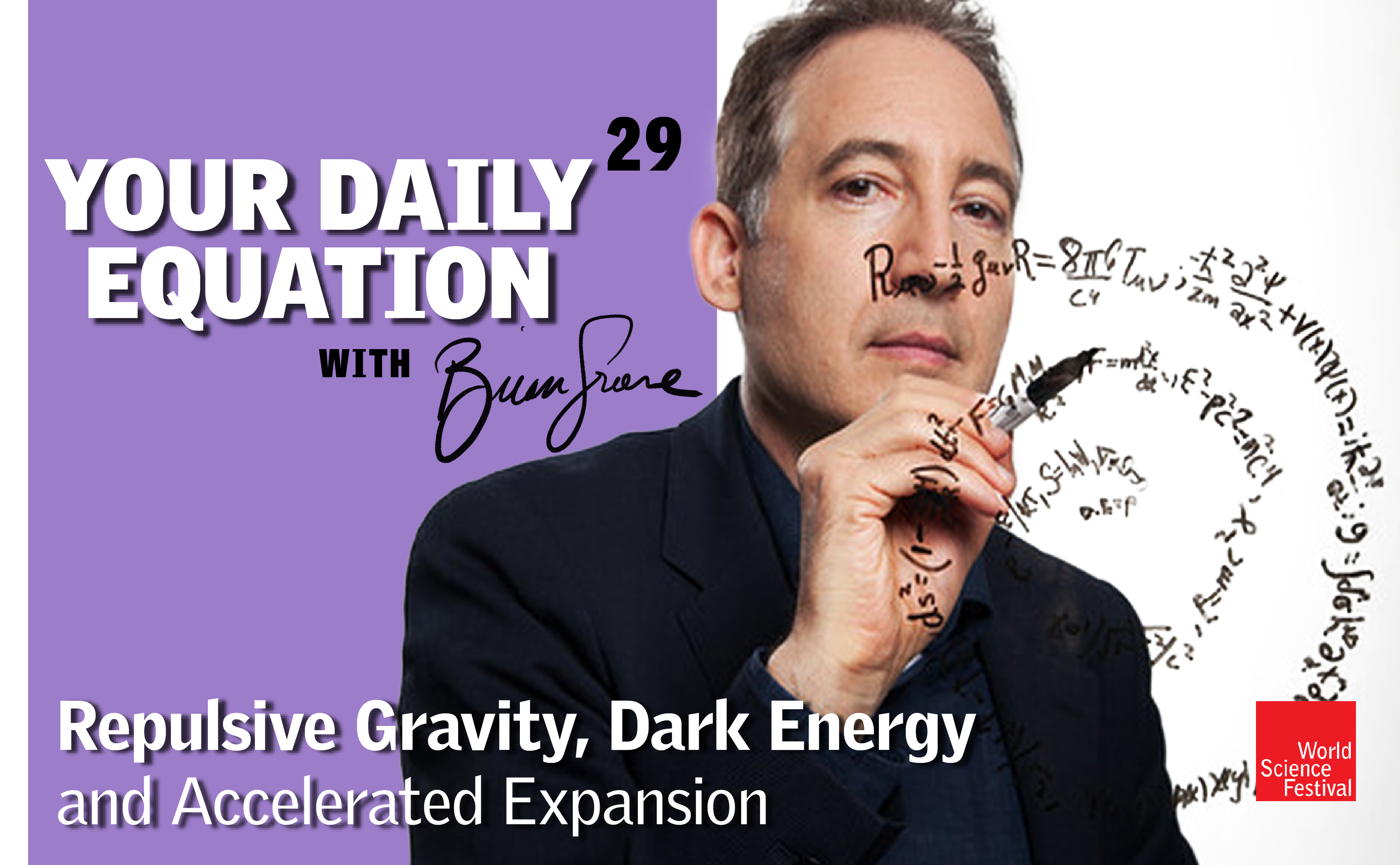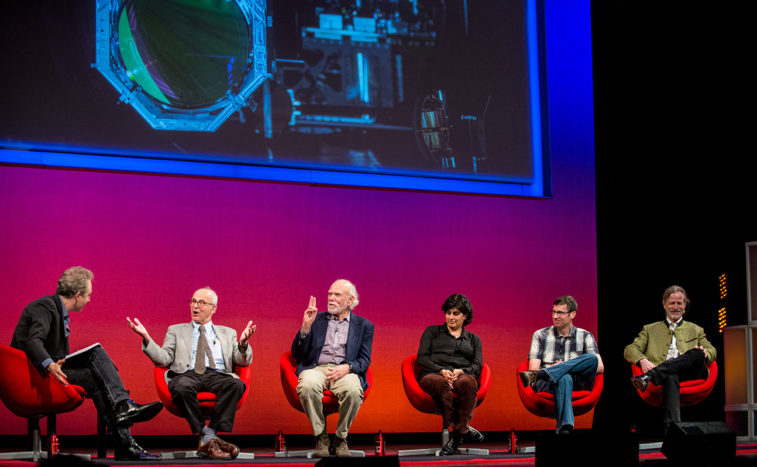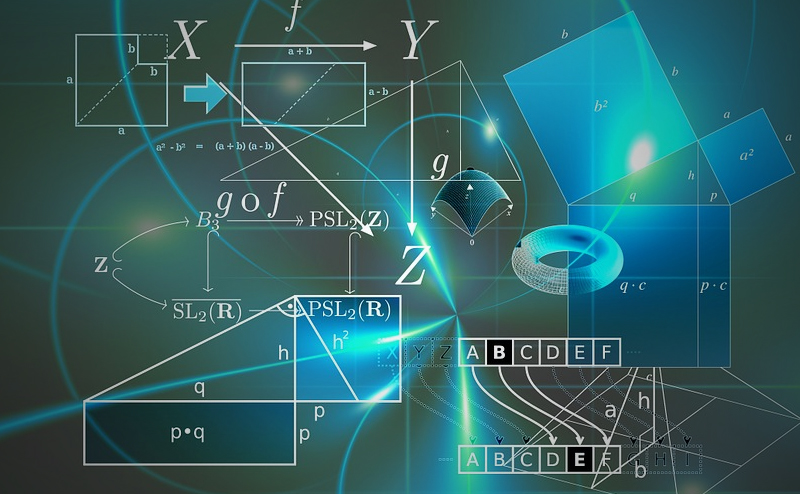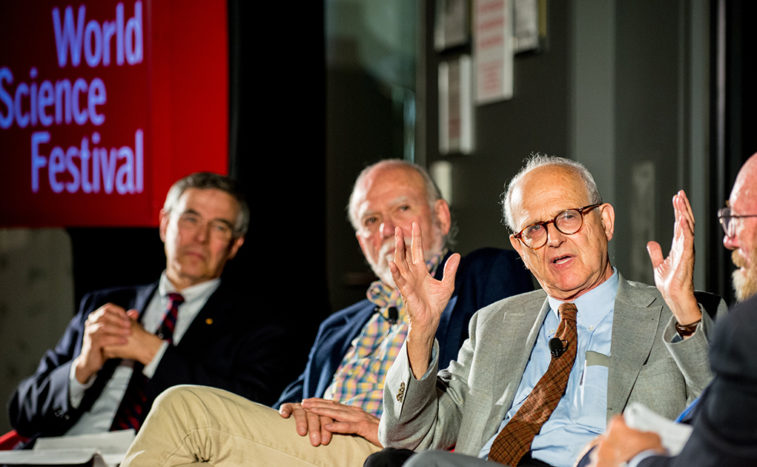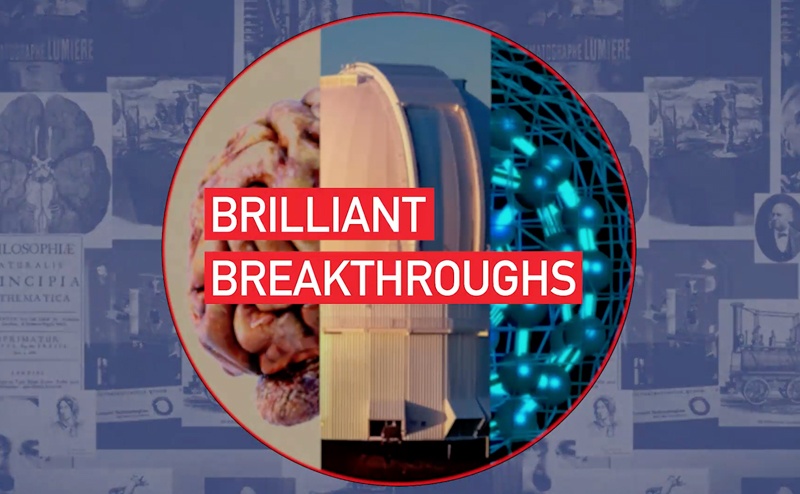3,882,509 views | 1:17:46
Join us for #YourDailyEquation with Brian Greene. Every Mon - Fri at 3pm EDT, Brian Greene will offer brief and breezy discussions of pivotal equations. Even if your math is a bit rusty, tune in for accessible and exciting stories of nature and numbers that will allow you to see the universe in a new way. Episode 29 #YourDailyEquation: One of the greatest surprises in the past few decades is the discovery that the expansion of space is speeding up. Join Brian Greene for a discussion of our best explanation: gravity can be repulsive and can thus drive the distant galaxies to rush away ever more quickly. Learn More
Speaker 1:
Hey everyone. Welcome to this next episode of Your Daily Equation. Today I’ve got one goal. I want to explain how it is that in Einstein’s general theory of relativity gravity cannot only be attractive, the version of gravity that we all know and love we experience at all the time, but gravity can also be repulsive. It can also push outward and to motivate this, there are a number of ways of motivating it, but I think the best way of motivating it is to use the recent observations. I guess it’s not that recent, any longer, I’m getting old, right? But in 1998, there was the shocking realization, which I’ll review in half a second, that not only is the universe expanding, it’s speeding up in its expansion. Something must be pushing everything apart. So that is the motivation, which we’ll get to in half a second, but let’s just set that in some historical context, right?
So we all know, and I’ve described in an earlier episode, let me bring this up on the screen here, good. We all know that Albert Einstein thought, as many people did, that the universe on the largest of scales with not changing eternal static always had the form that we witnessed on the largest scales, things do not change. And his perspective was changed by Edwin Hubble, who you see in the background here. Einstein looking through the telescope at, I believe this must be Mount Wilson Observatory, I can’t swear to that, I don’t know where this photograph was taken, but I imagine that’s where it was. So it’s not that Einstein actually did the observations, but it’s kind of a beautiful encapsulation in this image of Einstein’s turnaround, right?
From viewing the universe in his mind, to being static and unchanging, to viewing the universe as it actually is something that is changing over time, because what Hubble had established is that the distant galaxies are all rushing away from us and the pattern of their receding from us, the speed of their motion, being proportional to the distance, the farther way galaxy is the faster it’s moving away from us, is exactly in keeping with Einstein’s own general theory of relativity.
So if you want more on that subject, you can see it in an earlier episode of Your Daily Equation, I think it was called the Big Bang and Einstein, and I don’t know something like that, you’ll find it if you’re interested. But anyway, the bottom line is since 1929, we have known that space is expanding. The universe is stretching, but everybody, more or less everybody there were a few visionaries who thought that what I’m about to tell you might not be the case, but just about everybody thought that yes, it’s expanding, but it must be slowing down in its expansion, slowing down in the speed of recession of the distant galaxies. Why? Well, something that we all know about; you toss something up in the air, it goes up slower and slower because gravity pulls it back, right?
So the iconic example, I’ll show you what, here’s an Apple. Toss an Apple upward. It goes up slower and slower because gravity pulls it back. Similarly, most everybody thought that the speed of recession of the galaxies would slow down because every galaxy is pulling on every other. And so the attractive nature of gravity seem to ineluctably suggest that the expansion of space should slow down over time. And people were so certain that it was slowing down decelerating, if you will, that there was a parameter in cosmological models called Q, usually. Q was the deceleration parameter of the universe. And this is a measurable quantity in principle. For many decades, we didn’t have the capacity to measure it, but starting in the 1990s, we began to have the ability to measure distant galaxies by looking at supernova explosions within them. And that gives us a beacon that we can see clear across the cosmos, so we can look back in time and essence and see how fast a distant galaxy was moving at an earlier time.
And in principle that allows us to make a plot of how the speed of the recession has changed over time, looking at galaxies at different distances, different distances is equivalent to looking at galaxies at different times, examining the expansion history, therefore of the universe. So two teams, one led by Brian Schmidt, who I’ve spent some quality time with in Australia, as we’ve gone down there for the World Science Festival in Brisbane each year. Also Saul Perlmutter, who is a great guy, actually spent a very interesting few days with him in Paris some years ago at a conference. So these are wonderful people. They’re wonderful scientists and they’ve revolutionized their understanding of cosmology because their teams took the steps of measuring the deceleration parameter and they found that the universe is not decelerating at all. Their data showed that is it is accelerating. So the picture then would be, instead of the galaxies slowing down in their recession speed, they are picking up speed.
They’re going faster and faster over time. And it’s kind of pretty, it’s a pretty visual. All these visuals are a little misleading at some level. It’s not so much that the galaxies are rushing by us faster, per se, it’s actually that the separations between each galaxy and every other would be growing over time. The speed, therefore, is getting bigger, it’s accelerating. But anyway, you get a rough idea from that image. So the question is if the attractive nature of gravity is why everyone had the intuition that the speed of procession would be slowing down, if it’s not slowing down, then the attractive nature of gravity perhaps needs to be revisited. And in fact, Einstein himself knew that gravity could be not only attractive, but could also be repulsive. And this is embedded in Einstein’s general theory of relativity and to explain these modern observations, we need to leverage that quality of gravity in Einstein’s formulation in order to explain this observation.
So that’s what I want to do now, is just show you very briefly how it can be. And, I got to switch over is this bringing yes, there it is. My iPad. Okay. Oops. Sorry about that. So what I want to, therefore, in a fairly brief episode I hope, is talk about, I mean, not that I don’t like spending a lot of time with you guys, but I’d like this episode to be short and make it longer by explaining why I want it to be short. It’s a bit of a paradox in there, but the reason I wanted it to be short is I want the point to be really sharp and not diluted by all the details. All right. So I’m going to just get on with it. So we’re talking about repulsive gravity and also accelerated expansion.
I’m out of room, so I will compensate by making my letters unnecessarily vertical. All right, repulsive, gravity and accelerated expansion. All right, so let’s just get in. I want to show you the equation behind this. How does it go? So again, what does Einstein tell us with the general theory of relativity, the basic idea that you’ve seen many times, I’ve discussed it in previous episodes, just to be sort of complete; the idea is that curvature and the size of the universe, or let’s call it space time as a kind of shape, four dimensional shape, three dimensions of space, one at a time. This is given by the mass, energy, momentum, and other stuff too that will be very important to us because in the dot dot dot that I just wrote down, will also be pressure. Is this camera kind of at a weird angle? I’m going to just move this a little bit. It’s kind of looks weird to me, but it’s probably just my bad eyesight.
But anyway, so that’s the basic idea. Einstein encapsulates this notion in his famous field equations of general relativity: Nu minus a half G Mu Nu R equals eight PI G over C to the fourth T Mu Nu. And in this equation, the key ingredient is this guy, well, they’re all key, but the fundamental one upon which everything else depends is this fella called the metric. The metric on space time, it allows you to measure distance relationships between events that take place in space time. And what therefore is the relationship between this concept of distance relations embodied in this guy called the metric and the curvature and size that I described in the version of the equation in English, the version that allows us to perhaps to have a deeper intuition about what’s going on?
And the important point is that you are familiar with a certain kind of metric from your experience in everyday life encapsulated, perhaps in your class, in geometry, in high school, or maybe even before, if you were particularly precocious, which said, if you were on the flat plane and you go Delta X, horizontally, Delta, Y vertically, and then you want to calculate the distance between your starting location and your ending location we know how to do that. Pythagoras taught us is the squared of Delta X squared, plus Delta Y squared. I’m just going to just write that as Delta X squared, plus Delta Y squared to avoid having to write the square root, but you can put that in if you’d like. Now, the point is that if I now warp or curve things like this, and now this is sort of Delta X as a sort of poor version of curving.
But now the distance between your starting point and your ending location in general will not just be Delta X squared plus Delta Y squared, instead it will be some number that I’m going to call GXX times Delta X squared, plus some other number called GYY times Delta Y squared, and indeed there can be cross terms in general, which I’ll write as G X, Y Delta X, Delta Y plus G Y X Delta, Y times Delta X. So that’s the new distance relation on a surface in which has been warped or curved. And just to get an intuition for this, let me just bring up one example over here. All right, so there’s the Mona Lisa on a nice flat canvas, but now let’s distort the Mona Lisa by warping and curving the surface. And look, you can bloat it out, you can sink it inward, and the reason why the Mona Lisa’s familiar face looks distorted, is because the distance relationships on the canvas are changed when you start warping and curving the surface.
So the idea is that distance relationship between one location and other in her case between her nose and that iconic smile, or the distance between her eyes and her hairline, whatever, when you change those distance relationships, you warp the way she looks, you curve the surface on which she is painted. And therefore distance relationships are the natural ingredient to use when you’re talking about curvature. Now, you may recall as a footnote from earlier episodes that I introduced this idea of connection that allows you to move these tangent vectors from location to location, tangent vectors we use as are the failure of a tangent vector to come back to its starting direction on parallel translation around a loop, we use that as a diagnostic for curvature.
You can say, where’s the connection in this story? And for those who were following at a deep level, the metric can give rise to a very particular connection, a torsion free connection that’s compatible with the metrics of the lengths of vectors don’t change along parallel transport, and then you can go from this guy to curvature as we motivated earlier. I’m skipping over those details because I don’t want to obscure things, but for those who want to connect it with earlier episodes, I simply emphasize that bottom line is that we have this notion that the metric is the thing that allows it to talk about curvature through a very specific formula that gets all of these guys. R Mu Nu, the so-called [inaudible 00:14:04] tensor as a function of the metric. R the scalar curvature as a function of the metric and so forth.
We plug all those in there, generally derivatives of the metric. We plugged them into the left hand side of Einstein, and on the right hand side we have something that captures the matter, energy within space. We solve the equations, we get the metric, that’s Einstein’s idea, but now let’s get to the special case of relevance for today. So special case, and the special case is indeed the entire universe, if you will, or at least the part of the universe that in principle we have access to. And the idea, in this case, is that all of these coefficients, G Mu Nu, which can depend on time, as well as X, Y, and Z, the spatial and temporal coordinates in the universe. This can be reduced, so in this case for two dimensions, we had these four numbers in principle, you have sixteen numbers as Mu and Nu go from one to four X, Y, Z, and T.
But if the universe is homogeneous and isotropic, looks the same in every direction over large enough distances, it has the same basic properties, regardless of where you are sitting, all of this can be reduced to one coefficient that we usually call A that only depends on time, it’s called the scale factor. And what the scale factor does is it tells you how the distance relationships between any two points scales over time gets smaller or larger over time. So for instance, if the distance relationships got smaller, that’s what would be happening to distances in the universe. If it got larger, it would be doing that. So I hope I can go back, yes I can. So, the idea would be of any two galaxies, here’s galaxy number one and you have galaxy number two over here, whatever I’m not a very good artist as you can see, which is why I never bothered to draw anything.
And if the scale factor grows, the separation between those two galaxies would get larger over time. The misleading quality of what I just did is the galaxies themselves seem to get larger over time. No, they are held together by their usual attractive gravity that is able to withstand the expansion of space, so unless crazy things happen in the far future, they are not getting bigger. It’s rather that the galaxies themselves are just moving apart, given by the scale in A of T time some initial separation that I’ll call the distance D. Okay, so now we want the equation for AFT. Think about AFT, roughly speaking, as the size of the universe as it’s setting the scale for the separation between objects. What is the differential equation that you get if you follow this procedure and you plug into Einstein?
Now in an earlier episode, I showed you some of the equations that you get. Now, I’m going to show you both of the equations. I showed you one, that’s all I needed in that particular case, but here are the equations you get. So you get an equation looks like DA, DT the derivative of a with respect to T, divided by A, this whole quantity squared. And this guy is equal to again, because we’re in a very special situation, we’re assuming that the mass density of the universe is homogeneous. It’s eight PI G over three minus K C squared over A squared. Remember K from an earlier episode, we won’t really need it so much today, can be one, zero, or minus one corresponding to whether the shape of the universe is the three-dimensional version of a sphere, three-dimensional version of a plane, three-dimensional version of the saddle, the constant negative curvature case. That’s equation number one.
Equation number two has to do with the second derivative, give it a different color maybe hot pink, so that’s D two A, DT squared, divided by A. And you may wonder why there’s always an A in the bottom, it’s because we’re talking about the fractional growth of the universe, that ratio is a useful way of describing things. But in any event, let’s just look at the equation D two A, DT squared equals minus four PI G, over three, times Rho plus three P over C squared.
Those are the two equations. And because we’re talking about the possibility of accelerated expansion, I want to talk about the acceleration of the scale factor. Acceleration comes from the second derivative. Say, if you’re talking about the acceleration of the motion of a particle, it’s a second derivative of its position, in respect to T squared. Now I’m going to look at the second derivative of the scale factor, respect to T squared, which of course is right there in this second equation over there.
Now, here is the punchline. When you’re talking about energy density, which is what Rho is, maybe I didn’t even say that and I should just really emphasize that, this guy over here is energy density. Which, if you’re talking about matter, masses, the total mass divided by the total volume, this fellow over here is the pressure. That’s perhaps a little unexpected. In Newton, it’s just mass that comes into Newton’s equation, F = G*m1*m2/r2, from Einstein, E = mc2, energy and mass are the same.
So you expect that energy to play the role of mass and therefore having the Rho in here is pretty understandable, but in Einstein’s general theory of relativity, the right hand side is this more complicated gadget, distress, energy tensor that has not only energy in it, not only mass in it, but actually momentum and flow, and also pressure. That’s unexpected that pressure can contribute, and does contribute, to gravity. Now, why is that important for the story that I’m telling you right now? Well, energy density Rho, unless you’re doing some strange quantum mechanical things like [inaudible 00:20:38] which I’m not going to focus on now, that’s always greater than or equal to zero, right? The mass is a positive number, but what about pressure? Well, pressure. Sure. It can be positive, but pressure, almost my pressure almost looks like my density so let me fix that, but pressure can also be negative.
What does negative pressure mean? It means it’s sucking inward. It’s got tension inward. If you think about rubber bands, when you stretch them, they want to pull inward, they don’t push outward. The air in this room was pushing outward. It’s slamming into the walls, right? The air in the balloon is pushing against the surface, keeping the balloon nice and pumped up, whatever you call an inflated balloon, but rubber bands, or even the surface of the balloon pulls inward, right? And that’s negative pressure. And that’s important because look at the right hand side of my acceleration, not my acceleration, but the acceleration equation that I have right here, the right hand side has this negative sign over here, which means that if it was only dependent on Rho, then D2A DT squared would of course be negative. If it was just Rho. Rho is a positive number, and you’ve got a negative sign over there.
But in this combination, notice that if we are in a situation where Rho plus three P over C squared, let me set C equal to one, which is usual units that we use just so I don’t have to worry about, let’s put this as Rho plus three P, if this quantity turned out to be negative, then that negative sign together with this negative sign here, we yield a positive number on the right hand side. Let me not get rid of it there and therefore D2A DT squared would be positive, right? Would be positive.
That means acceleration, speeding up in its expansion. It’s this version over here that we expected because that’s Newton, the speed of recession should be slowing down over time acceleration is negative, but as we see because of this P, and here’s really the point, because of the P on the right hand side, which can be negative Rho plus three P itself can be negative in principle. And therefore we can get a negative over here together with this negative yields us a positive, giving us accelerated expansion. And that’s really what we mean by repulsive gravity. Repulsive gravity.
The whole point then is that this fellow that we have over here because of the pressure dependence, can give rise to a negative number for Rho plus three P, which yields with the minus sign in the acceleration equation and accelerated expansion outward push overall, the outward push is not from the pressure, the pressure’s pulling inward, it’s that inward pulling pressure sources an outward pushing gravity. That outwards pushing gravity gives us D2A D squared is greater than zero.
So one key example, that I’ll come back to later on, is something called Einstein’s Cosmological Constant. Cosmological constant. The number that Einstein introduced in 1917, because he wanted to try to stabilize the universe, give it a fixed size that wouldn’t change over time, and to do that he needed some kind of outward push to counteract the usual inward pull of gravity. So he finally chose a value of the outward push to do that. And that numerical value is encapsulated by this Greek letter Lambda, because for Lambda, and I’ll talk about this next time, you can show that the pressure is equal to minus Rho, and if pressure is equal to minus Rho, than it is certainly the case that Rho plus three P will indeed be negative because you’ve got Rho plus three times minus Rho, and that’s Rho minus three Rho minus two Rho, a negative value if Rho is positive.
And that indeed allows us to explain the observations of the accelerated expansion of the universe that Brian Schmidt, Saul Perlmutter, and their two teams found. They won the Nobel Prize in 2011 for the observational discovery. And this version of repulsive gravity is the best explanation that we have had then, and still today, to explain those surprising observations. In a subsequent episode, I’ll also describe how repulsive gravity can you be used for another solution to a different puzzle, which is what sparked the Big Bang. What drove space to expand rapidly in the early universe.
And as I’ll show, maybe even in the next episode, repulsive gravity can play the role to answer to that question to. The repulsive push may have been the bang in the Big Bang as we will see, but anyway, the point that I just want to make today, and of course, it’s a longer episode than I anticipated, what else is new? Is that gravity can be repulsive and it’s a very simple equation that I showed you. Just final bring it up on the screen over here. It’s this equation that we have the acceleration equation for the scale factor and it’s the minus sign here together with the possibility of having a negative value for Rho plus three P over C squared, because pressure can be negative that allows a positive right hand side, a positive value of D2A DT squared, a positive acceleration of the scale factor A of the universe. All right, that’s all I wanted to talk about today until next time until the next episode, take care.
Join us for #YourDailyEquation with Brian Greene. Every Mon - Fri at 3pm EDT, Brian Greene will offer brief and breezy discussions of pivotal equations. Even if your math is a bit rusty, tune in for accessible and exciting stories of nature and numbers that will allow you to see the universe in a new way. Episode 29 #YourDailyEquation: One of the greatest surprises in the past few decades is the discovery that the expansion of space is speeding up. Join Brian Greene for a discussion of our best explanation: gravity can be repulsive and can thus drive the distant galaxies to rush away ever more quickly. Learn More
Brian Greene is a professor of physics and mathematics at Columbia University, and is recognized for a number of groundbreaking discoveries in his field of superstring theory. His books, The Elegant Universe, The Fabric of the Cosmos, and The Hidden Reality, have collectively spent 65 weeks on The New York Times bestseller list.
Read More© 2008-2023 World Science Foundation. All Rights Reserved.
World Science Festival ® and its related logo are registered trademarks of the World Science Foundation. All Rights Reserved.




